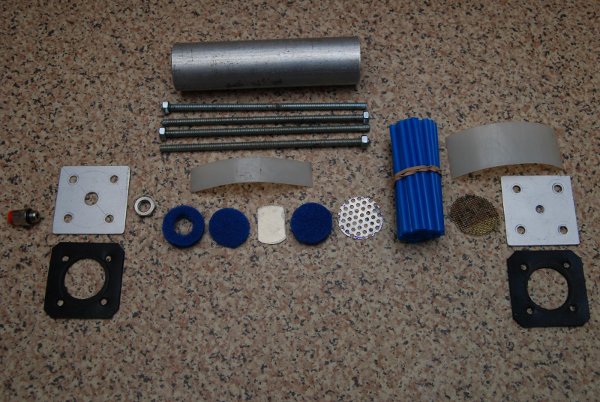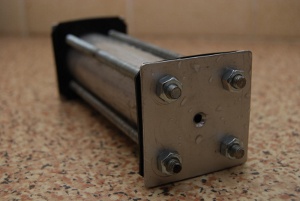
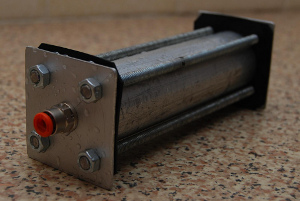
Front and rear views
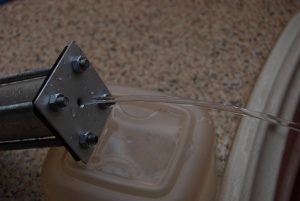
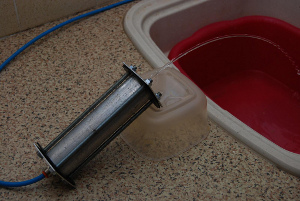
Nozzle running
This nozzle was a quick build after a video of a running Laminar flow nozzle was posted on the Make Magazine blog. As I have been experimenting with ideas for building fountains for a project in summer 2011 it inspired me to knock together a basic prototype.
I found the information at the forum: http://laminar.forumotion.com/ to be invaluble. The project was up and running in two evenings of tinkering in the garage, and some time reading up the background over a couple of lunchtimes.
It seems common for nozzles to be at least 4" diameter, and more usually 6" to 8", however for my needs, the nozzle doesn't need to be any where as big as I wanted a small jet, so I scaled down the ideas.
Apart from the straws, all the other parts were in stock, which has driven the design.The main body is manufactured from a piece of aluminium pipe, 35mm bore about 150mm long. The end plates are aluminium sheet approx 1.5mm thick, held together with M6 studding and with gaskets cut from Nitrile Rubber sheeting.
Following the flow of water;
Water enters through a 6mm push-fit fitting, secured to the base plate with an 1/8" BSP nut. Water then passes through two layers of nylon cut from a scouring pad, before hitting a thin piece of aluminium sheet to divert the flow sideways, where it then meets two more layers of scouring pad. On top of this is a piece of perforated aluminium sheet, all spaced by a strip of nylon shim. This stack up is approx 15mm. Next the water flows through the usual pack of drinking straws, topped off with a piece of brass mesh. Finally there is another piece of nylon shim approx 35mm before the nozzle cap is reached. The nozzle is simply a 4mm hole, countersunk at 100 degrees, and then polished.
The nozzle was connected to the tap with a length of hose and run up, I can get about 18" of parabola with a smooth flow. Checking the flow with a weir gauge gave a flow of approx 1 lpm before the flow breaks up.
